September 2022
Initial study by iRASTE – intelligent solutions for Road Safety through Technology and Engineering – analysing the effects of Collision Avoidance devices installed on a fleet of buses in Nagpur shows marked reduction in safety alerts received, fostering better driving practices.
According to the ‘Road Accidents in India 2020’, a report published by the Transport Research Wing of the Ministry of Road Transport and Highways, India has the dubious distinction of having the highest human fatalities globally due to road accidents. It is reported that 1.5 lakh lives are lost in India in road fatalities every year. Road accidents involving large vehicles like buses or trucks contribute more fatalities to Vulnerable Road Users (VRUs) as well as cause grave damage to public property. Studies have reported that 70% of accidents are due to driver distraction and indiscipline.
With most of our cities running large public bus services that are the lifeline of mobility within the city, improved safety of these public transport vehicles not only offers passengers a safer and timely commute, but also safeguards other passenger vehicles and VRUs like pedestrians from potentially dangerous situations. As part of its focus on Vehicle Safety, Project iRASTE – a multi-institution partnership with the government, Intel India, INAI, IIIT Hyderabad, Central Road Research Institute, Mahindra and Mahindra and Nagpur Municipal Corporation (NMC) – is engaged in helping bus drivers improve their driving behaviours through the application of AI tools. This has been done with the help of AI-based Collision Avoidance Systems (CAS) for continuous reinforcement of safe driving behaviours, alongside periodic Defensive Driving trainings to drivers.
What iRASTE Did
In the initial period, 50 Nagpur Municipal Corporation (NMC) Aapli buses in Nagpur were selected for installing AI-based Collision Avoidance Systems (CAS) devices to study their effectiveness in improving the safety of public transport buses. The study involved bus drivers with varied driving experiences. Vehicles and routes assigned to drivers were not constant. The typical hours of operation of the fleet of buses were between 5 am and 11 pm. The pilot study analysed 300,000 kms of distance covered by the buses from December 2021 to March 2022 with a median of 80 kms driven by a driver each day.
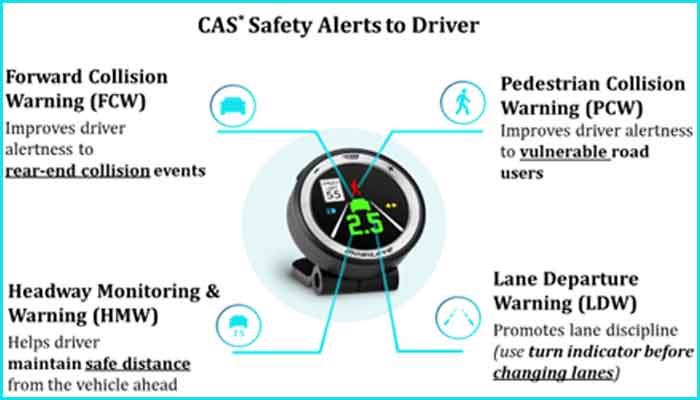
AI-powered Collision Avoidance System (CAS) continuously monitors the road ahead and warns the driver in the form of audio and visual alerts a few seconds before a potential collision. For instance, alerts in case of potential collisions with pedestrians, lane departure warnings, forward collision warnings and also prompts to maintain safe distance from the vehicle ahead. Such real-time warnings are known to improve driver reaction time by up to 2X which in turn reduces likelihood of collisions.
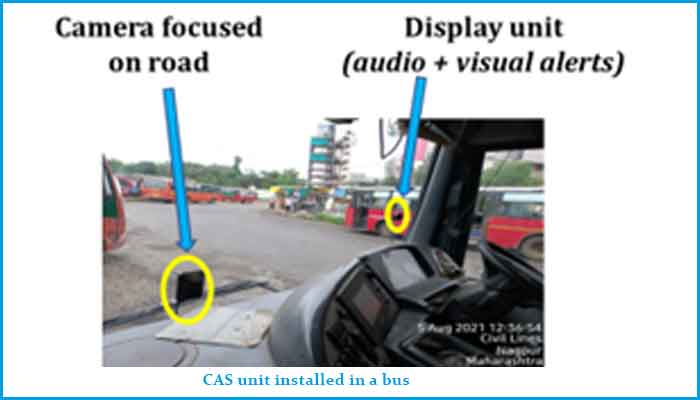
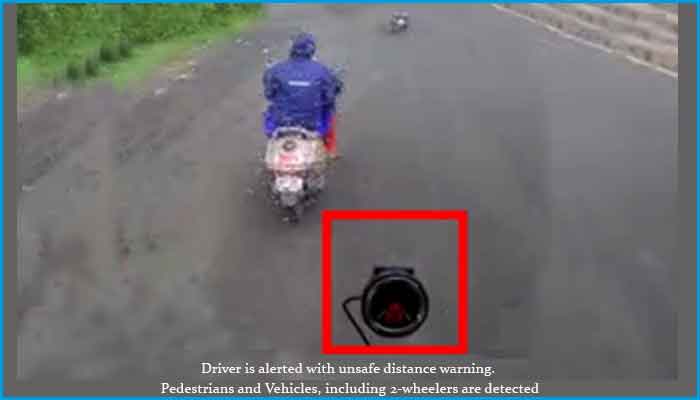
Control and Observation Periods
The data collection period was segmented into Control period and Observation periods. In the Control period (CP), CAS was configured not to provide in-cabin alerts to the driver, instead the alert events were sent to the cloud server. At the end of the Control period and before starting the Observation period, the drivers were trained about the CAS system and made aware of the kind of alerts provided to help in their driving. “We believe that in addition to technology-based interventions, continuous feedback to drivers via trainings and safety campaigns is essential to bring about improvement in safe driving practices,” says Varma Konala, CEO, INAI, an Applied AI research centre. Towards this end, CSIR – CRRI has designed a 4-part training program to benefit about 1,500 commercial vehicle drivers over a period of 2 years. Titled, “Defensive Driving and Driver Assistance through Artificial Intelligence”, the training program specifically addresses the needs of Commercial Vehicle (Bus) drivers and aims to promote awareness of Defensive Driving Practices in them. The first of this customized training program was conducted by CSIR – CRRI between 21.2.022 to 26.2.2022 in Nagpur where 345 drivers benefited from it.
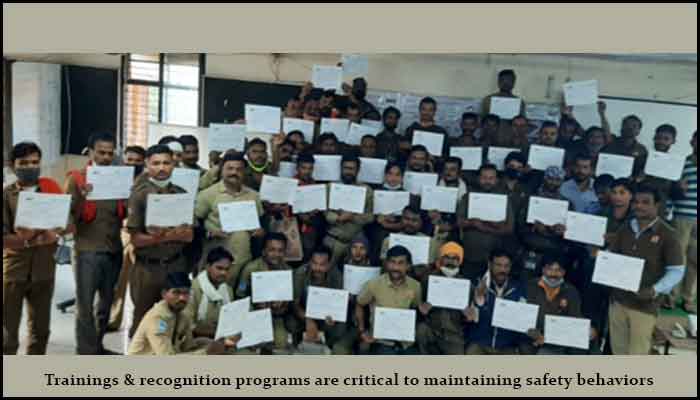
In the Observation period, CAS was configured for normal functioning where in-cabin alerts were sent to the driver. This project design parameters were defined in a way to capture a large sample of data, and to obtain necessary variation as would be present in a real-world scenario.
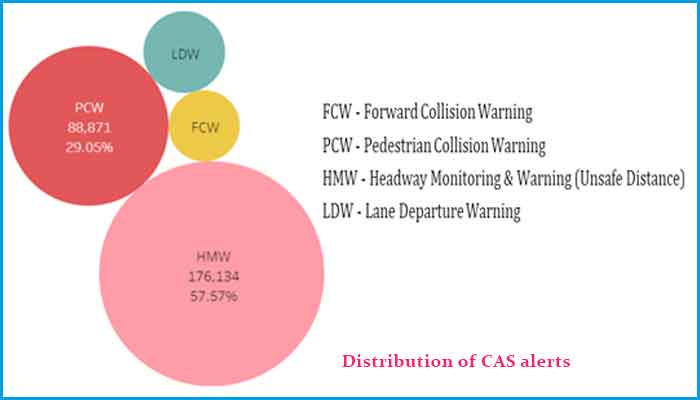
Observations
Improvement of safe driving behaviour was measured through the average reduction in alerts per kilometre for each driver between Control and Observation periods. A reduction in alerts indicates that a driver was able to pay attention to and take action on alerts received. Thus, this measure serves as a (leading) indicator of safe driving performance and enables fleet operators to provide continuous feedback to drivers.
- 1. On an average, 48% of drivers in the study group demonstrated improvement with reduced alerts and hence safe driving behaviour (~1 in 2 drivers) at the end of Month 1 of observation.
- Maximum drivers showed improvement in safe following distance (65%) – a critical driving discipline
- Among the improved drivers, all aspects of safety alerts reduced by 31% on average thus lowering near-miss incidents
- The highest alert reduction was observed for Pedestrian Warning, which protects vulnerable road users. This warning saw 43% reduction among improved drivers.
- Month-on-month variances in safety performance were also observed.
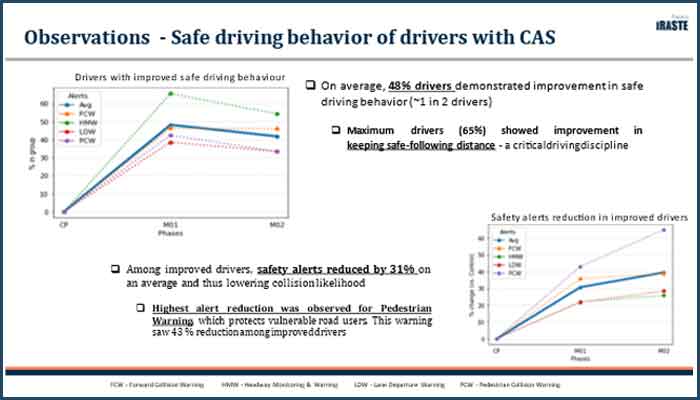
Implications
The interim observations are encouraging with 48% drivers on average demonstrating improvement in safe driving behaviour at the end of month 1 of observation via reduction in safety alerts . Improvements in defensive driving practices like safe driving distance and alertness to Vulnerable Road Users (VRUs) are noteworthy. After this initial phase, the project has now expanded by installing CAS devices in an additional 100 NMC buses. This extended group of buses and their data would help to expand and further analyse the impact on NMC buses, their drivers and fleet operators.
According to Varma, safe driving behaviours are trained, and take time to become a regular habit, which is indicated by month-on-month variations in initial months of performance. While safety alerts from CAS devices help provide real-time reinforcement of safe driving behaviours, he opines that continuous feedback to drivers via trainings and safety campaigns is essential to sustain any improvement. “In the next 6 months, Project iRASTE will continue to analyse performance of drivers and conduct periodic Defensive Driving trainings to provide continuous feedback. The final project goal is to help convert the safer driving behaviour of drivers into a tangible reduction in accidents reported with NMC bus fleet on road,” he says.

